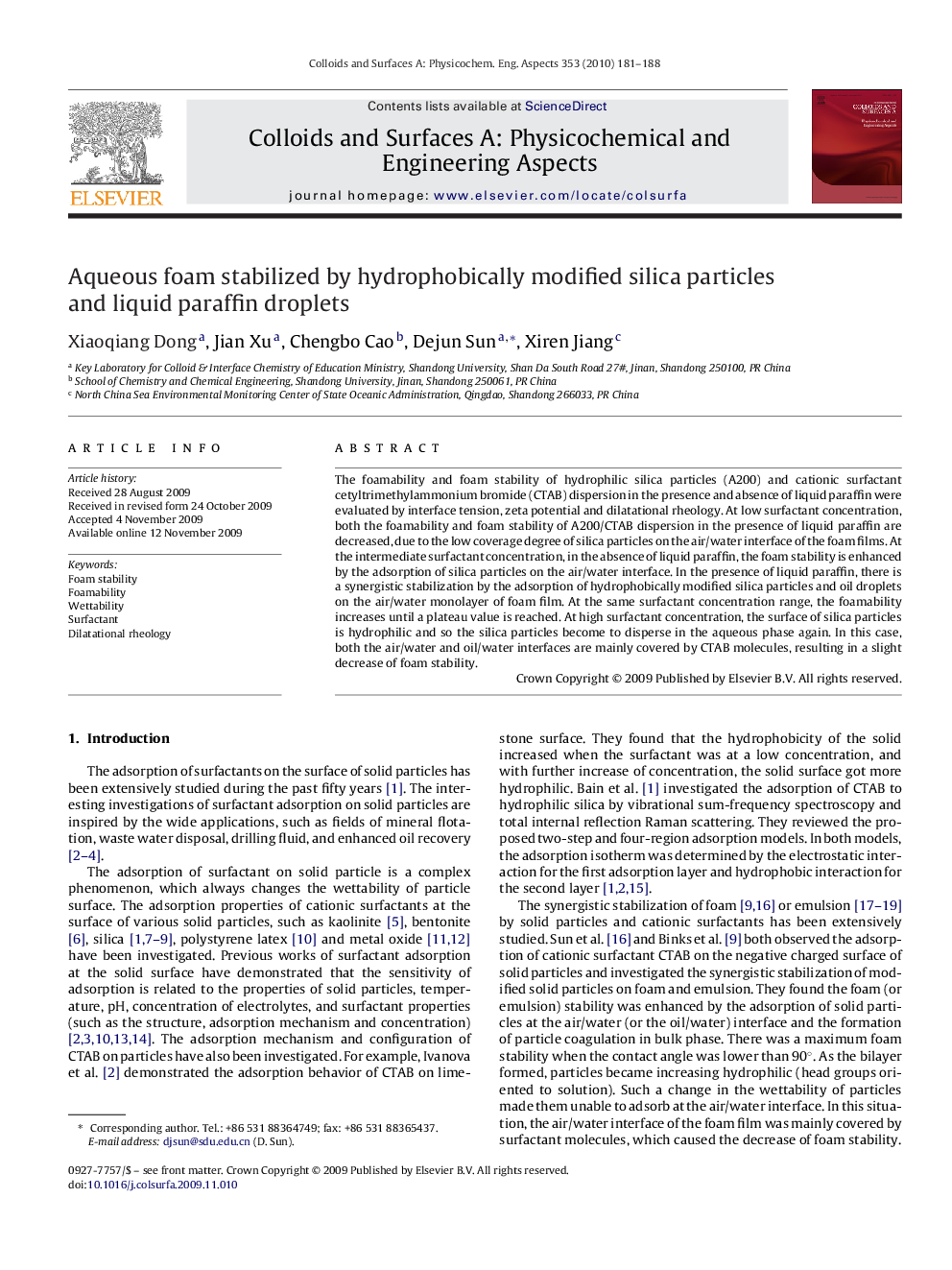| Article ID | Journal | Published Year | Pages | File Type |
|---|---|---|---|---|
| 595683 | Colloids and Surfaces A: Physicochemical and Engineering Aspects | 2010 | 8 Pages |
The foamability and foam stability of hydrophilic silica particles (A200) and cationic surfactant cetyltrimethylammonium bromide (CTAB) dispersion in the presence and absence of liquid paraffin were evaluated by interface tension, zeta potential and dilatational rheology. At low surfactant concentration, both the foamability and foam stability of A200/CTAB dispersion in the presence of liquid paraffin are decreased, due to the low coverage degree of silica particles on the air/water interface of the foam films. At the intermediate surfactant concentration, in the absence of liquid paraffin, the foam stability is enhanced by the adsorption of silica particles on the air/water interface. In the presence of liquid paraffin, there is a synergistic stabilization by the adsorption of hydrophobically modified silica particles and oil droplets on the air/water monolayer of foam film. At the same surfactant concentration range, the foamability increases until a plateau value is reached. At high surfactant concentration, the surface of silica particles is hydrophilic and so the silica particles become to disperse in the aqueous phase again. In this case, both the air/water and oil/water interfaces are mainly covered by CTAB molecules, resulting in a slight decrease of foam stability.
